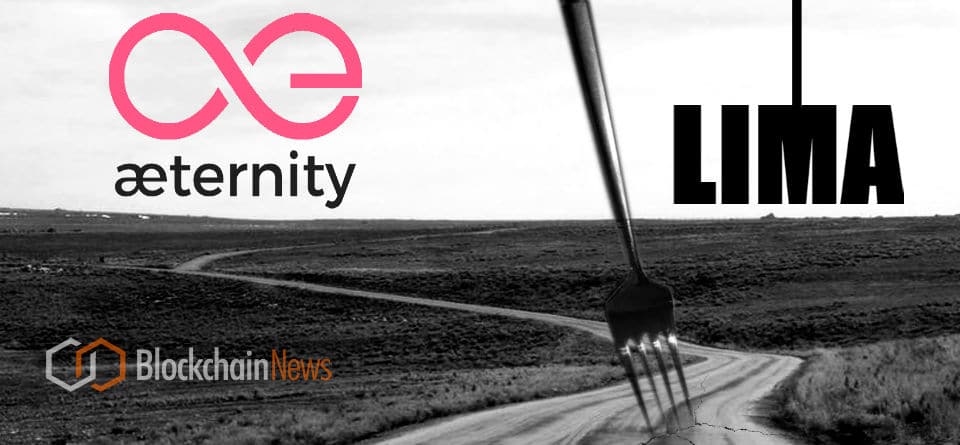Popular open-source blockchain protocol Æternity is going forward with its LIMA hard fork, releasing the latest software to miners and handing over governance to the community. Æternity is one of the most active blockchain developer communities measured by code activity.
“æternity grew from a team of core developers to an ecosystem built by its community, for its community, which makes this protocol upgrade a step forward in the project’s mission. The launch of the on-chain governance system also marks a new era for æternity blockchain,” said Yanislav Malahov, Founder of æternity. “In addition, the FATE VM and improved state channels are part of the æternity community’s ongoing goal to create a user-friendly blockchain platform for building decentralized applications that scale.”
The third major æternity protocol upgrade this year, LIMA adds a sophisticated, improved Virtual Machine, governance, and naming system to challenge Ethereum and other blockchain platforms. Core developers proposed hard fork, LIMA software release to miners, who will mine or not mine fork of aeternity blockchain.
The LIMA protocol upgrade introduces the Fast Æternity Transaction Engine, or FATE, a Virtual Machine optimized for æternity smart contracts. This powerful Virtual Machine outperforms other blockchain networks with better efficiency and 10 times less gas consumption, giving developers the advantage of low fees, even when scaling quickly.
This upgrade delivers improvements to state channels, in which the æternity network relies on power scalability. Built into æternity’s first layer, opening a lightweight state channel is a simple transaction, with computation completed by a trusted node. Once set up, state channel users do not need to pay fees or spend gas to execute smart contracts and transactions. All communications are private until published on-chain in the case of a dispute or after the closing of the channel.
In addition, LIMA introduces æternity’s next level of decentralized governance and the completion of its full migration from Ethereum to the æternity blockchain. Initially created as an ERC-20 token on Ethereum, the AE token has now fully migrated to the æternity Mainnet. This was made possible in part by Generalized Accounts, which make æternity highly flexible and let developers create smart contracts that can verify transactions.
The LIMA upgrade introduces an improved on-chain governance aepp. Since weak voter participation is a major challenge for many blockchain projects, the æternity community has introduced a delegated voting system to allow token holders to download or host a simple, mobile-optimized blockchain application to propose votes or participate in the voting process.
Lastly, the LIMA upgrade launches the official æternity naming system, .chain. Names will be auctioned and can be mapped to any address on æternity blockchain, in the network and beyond. They do not rely on a second-layer solution like other platforms and can be used within smart contracts to point to accounts that represent accounts, oracles, and state channels.
æternity is a public, open-source blockchain protocol that enables a platform for next-generation decentralized applications and high scalability. Its core components are written in the functional programming language Erlang, and its smart contracts are also functional. Unlike other blockchain platforms, the æternity protocol itself incorporates several essential technological features, including a recently upgraded virtual machine, off-chain scaling solution – state channels, on-chain governance mechanism, and naming system. æternity also features SDKs in Javascript, GO, Phyton, Java, as well as a middleware and a development suite that streamlines smart contract development. For more information, please visit https://aeternity.com/.
- Æternity Blockchain Developers Plan to Take On Ethereum With Final Hardfork – Handing over Governance to the Community – November 5, 2019
- Researchers Claim Cross-border B2B Blockchain Transactions set to Explode to $4.4 Trillion by 2024 – November 5, 2019
- Global Companies Unite to Unveil Comprehensive Framework for Tokenization – It’s About Time – November 5, 2019
- Microsoft Kicks Off Enterprise-ready Crypto Token Platform On Azure – Predicts Tokenization Is A Pillar Of The Coming Revolution In Multi-Party Applications That Blockchain Technology Ushered In – November 5, 2019
- Polish-British Blockchain Company Billon to Digitise Euro in Deal with Raiffeisen Bank International – November 5, 2019
- 500.com Limited Releases Intel on Blockchain Technology for China’s Lottery Industry – November 4, 2019
- Oxfam, Etherisc, and Aon Find Success with First Blockchain-Based Agricultural Insurance Policies for Smallholder Farmers in Sri Lanka – November 4, 2019
- Interview: Brock Pierce and Two Prime’s Alexander S. Blum – November 4, 2019
- Samsung Bullish on Blockchain – Pushing for Developers on New Samsung Blockchain Platform SDK – November 1, 2019
- Busted: SEC and CFTC Nail First Global Credit – a Swiss Security-Based Bitcoin Swaps Dealer That Allegedly Aimed at American Investors – November 1, 2019
- Zilliqa and Oxford Women in Computer Science Society Join to Bring Diversity to Blockchain Sector – November 1, 2019
- VeganNation Add Brazilian Football Superstar Cafu to It’s Advisory Board – October 31, 2019
- Alliance Investments Announces Plans Tokenization of £500m in UK Real Estate in STOs – October 31, 2019
- Blockchain Gaming Project Immutable Sells out US$6.2 Million Genesis Sale – October 31, 2019
- Twitter and Square CEO Jack Dorsey Backs ICO Exchange Platform Coinlist – October 30, 2019
- Mastercard Teams Up With Envisible to bring Traceability to Food Supply Chain in Topco Stores – October 30, 2019
- Korean Mobile Payment App Chai Reaches 500K users in 4 months – $54 million in Transactions – October 30, 2019
- Quantum Resistant Ledger (QRL) Foundation Announces New Research Arm – Seeking Four Post-Quantum cryptographers – October 25, 2019
- Thailand’s SEC Approves ICO Platform – Leading the Region in Progressive Token Regulations – October 25, 2019
- Chinese President Xi Jinping Vows to Accelerate Blockchain Technology Innovation in China – October 25, 2019
Also published on Medium.






